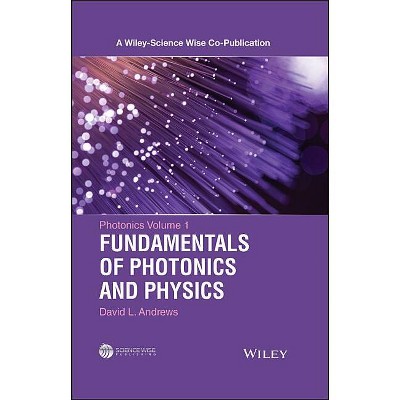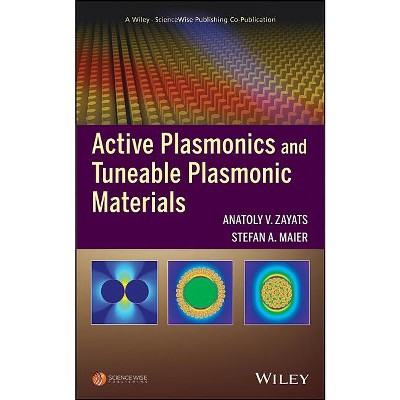Photonics, Volume 2 - (Wiley-Science Wise Co-Publication) by David L Andrews (Hardcover)

About this item
Highlights
- Discusses the basic physical principles underlying the science and technology of nanophotonics, its materials and structures This volume presents nanophotonic structures and Materials.
- About the Author: David L. Andrews leads research on fundamental molecular photonics and energy transport, optomechanical forces, and nonlinear optical phenomena.
- 424 Pages
- Technology, Lasers & Photonics
- Series Name: Wiley-Science Wise Co-Publication
Description
Book Synopsis
Discusses the basic physical principles underlying the science and technology of nanophotonics, its materials and structures
This volume presents nanophotonic structures and Materials. Nanophotonics is photonic science and technology that utilizes light/matter interactions on the nanoscale where researchers are discovering new phenomena and developing techniques that go well beyond what is possible with conventional photonics and electronics.The topics discussed in this volume are: Cavity Photonics; Cold Atoms and Bose-Einstein Condensates; Displays; E-paper; Graphene; Integrated Photonics; Liquid Crystals; Metamaterials; Micro-and Nanostructure Fabrication; Nanomaterials; Nanotubes; Plasmonics; Quantum Dots; Spintronics; Thin Film OpticsComprehensive and accessible coverage of the whole of modern photonics
Emphasizes processes and applications that specifically exploit photon attributes of light
Deals with the rapidly advancing area of modern optics
Chapters are written by top scientists in their field
Written for the graduate level student in physical sciences; Industrial and academic researchers in photonics, graduate students in the area; College lecturers, educators, policymakers, consultants, Scientific and technical libraries, government laboratories, NIH.
From the Back Cover
Discusses the basic physical principles underlying the science and Andrews technology of nanophotonics, its materials and structures
This volume presents nanophotonic structures and materials. Nanophotonics is photonic science and technology that utilizes light/ matter interactions on the nanoscale where researchers are discovering new phenomena and developing techniques that go well beyond what is possible with conventional photonics and electronics. The topics discussed in this volume are: Silicon Photonics; Cavity Photonics; Metamaterials:
State of the Art and Future Directions; Nanoplasmonics; Dielectric Photonic Crystals; Quantum Dots; Magnetic Control of Spin in Molecular Photonics; Thin-Film Molecular Nanophotonics; Light-Harvesting Materials for Organic Electronics; Metal Oxide Photoelectrochemistry for Hydrogen Production; and Optical Control of Cold Atoms and Bose-Einstein Condensates.
- Comprehensive and accessible coverage of the whole of modern photonics
- Emphasizes processes and applications that specifically exploit photon attributes of light
- Deals with the rapidly advancing area of modern optics
- Chapters are written by top scientists in their field
Written for the graduate-level student in physical sciences; industrial and academic researchers in photonics, graduate students in the area; college lecturers, educators, policymakers, consultants, scientific and technical libraries, government laboratories, NIH.
About the Author
David L. Andrews leads research on fundamental molecular photonics and energy transport, optomechanical forces, and nonlinear optical phenomena. He has over 300 research papers and a dozen of books to his name--including the widely adopted textbook, Lasers in Chemistry. The current focus of his research group is on optical vortices, novel mechanisms for optical nanomanipulation and switching, and light harvesting in nanostructured molecular systems. The group enjoys strong international links, particularly with groups in Canada, Lithuania, New Zealand, and the United States. Andrews is a Fellow of the Royal Society of Chemistry, a Fellow of the Institute of Physics, and a Fellow of SPIE, the international society for optics and photonics.
Shipping details
Return details
Trending Non-Fiction






Discover more options





